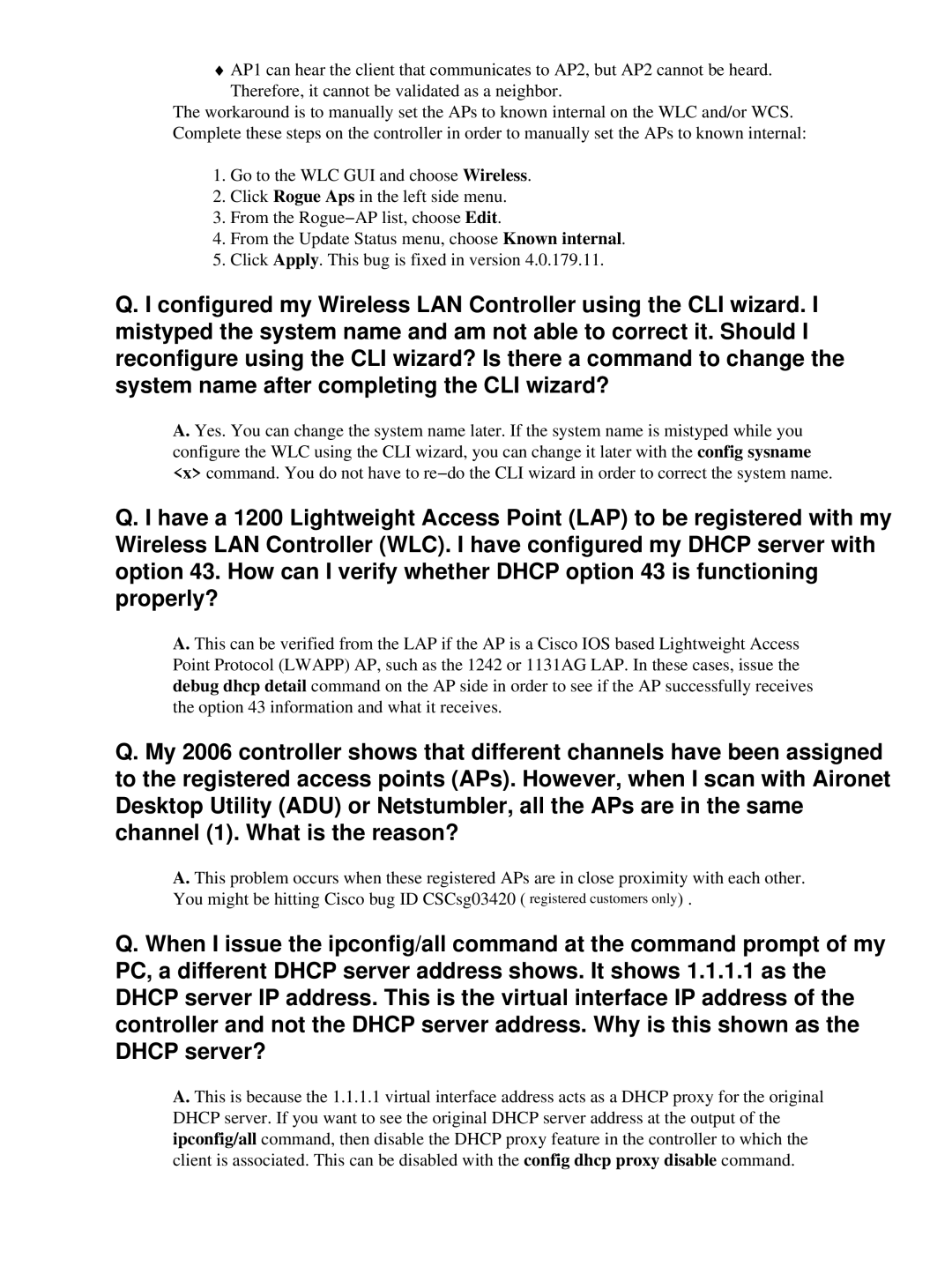♦AP1 can hear the client that communicates to AP2, but AP2 cannot be heard. Therefore, it cannot be validated as a neighbor.
The workaround is to manually set the APs to known internal on the WLC and/or WCS. Complete these steps on the controller in order to manually set the APs to known internal:
1.Go to the WLC GUI and choose Wireless.
2.Click Rogue Aps in the left side menu.
3.From the Rogue−AP list, choose Edit.
4.From the Update Status menu, choose Known internal.
5.Click Apply. This bug is fixed in version 4.0.179.11.
Q.I configured my Wireless LAN Controller using the CLI wizard. I mistyped the system name and am not able to correct it. Should I reconfigure using the CLI wizard? Is there a command to change the system name after completing the CLI wizard?
A.Yes. You can change the system name later. If the system name is mistyped while you configure the WLC using the CLI wizard, you can change it later with the config sysname <x> command. You do not have to re−do the CLI wizard in order to correct the system name.
Q.I have a 1200 Lightweight Access Point (LAP) to be registered with my Wireless LAN Controller (WLC). I have configured my DHCP server with option 43. How can I verify whether DHCP option 43 is functioning properly?
A.This can be verified from the LAP if the AP is a Cisco IOS based Lightweight Access
Point Protocol (LWAPP) AP, such as the 1242 or 1131AG LAP. In these cases, issue the debug dhcp detail command on the AP side in order to see if the AP successfully receives the option 43 information and what it receives.
Q. My 2006 controller shows that different channels have been assigned to the registered access points (APs). However, when I scan with Aironet Desktop Utility (ADU) or Netstumbler, all the APs are in the same channel (1). What is the reason?
A. This problem occurs when these registered APs are in close proximity with each other. You might be hitting Cisco bug ID CSCsg03420 ( registered customers only) .
Q. When I issue the ipconfig/all command at the command prompt of my PC, a different DHCP server address shows. It shows 1.1.1.1 as the DHCP server IP address. This is the virtual interface IP address of the controller and not the DHCP server address. Why is this shown as the DHCP server?
A. This is because the 1.1.1.1 virtual interface address acts as a DHCP proxy for the original DHCP server. If you want to see the original DHCP server address at the output of the ipconfig/all command, then disable the DHCP proxy feature in the controller to which the client is associated. This can be disabled with the config dhcp proxy disable command.
